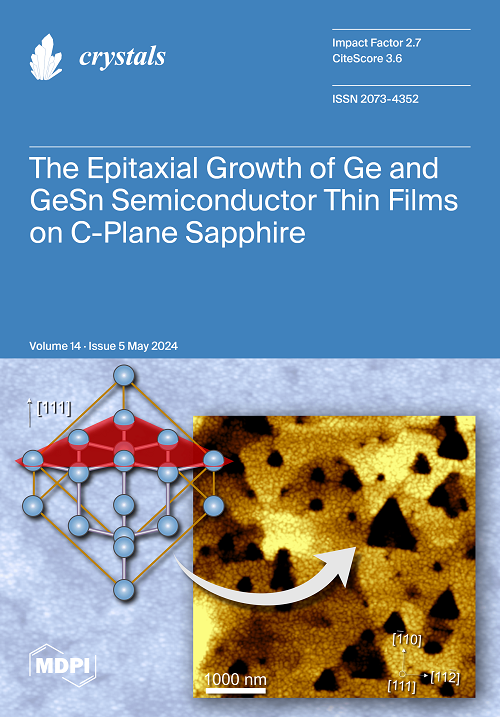Atomistic Simulation Studies of Na4SiO4
IF 2.4
4区 材料科学
Q2 CRYSTALLOGRAPHY
引用次数: 0
Abstract
Tetrasodium silicate (Na4SiO4) has emerged as a promising candidate for battery applications due to its favorable ionic transport properties. Atomic-scale simulations employing classical pair potentials have elucidated the defect mechanisms and ion migration dynamics in Na4SiO4. The Na Frenkel defect, characterized by the creation of a Na vacancy and an interstitial Na⁺ ion, is identified as the most energetically favorable defect process, facilitating efficient vacancy-assisted Na⁺ ion migration. This process results in three-dimensional ion diffusion with a low activation energy of 0.55 eV, indicating rapid ion movement within the material. Among monovalent dopants (Li⁺, K⁺, and Rb⁺), K⁺ was found to be the most advantageous for substitution on the Na site. For trivalent doping, Al is the most favorable on the Si site, generating additional Na⁺ ions and potentially enhancing ionic conductivity. Ge was identified as a promising isovalent dopant for the Si site. These theoretical findings suggest that Na4SiO4 could offer high ionic conductivity and stability when optimized through appropriate doping. Experimental validation of these predictions could lead to the development of advanced battery materials with improved performance and durability.Na4SiO4 的原子模拟研究
硅酸四钠(Na4SiO4)因其良好的离子传输特性而成为电池应用的理想候选材料。采用经典对电位进行的原子尺度模拟阐明了 Na4SiO4 中的缺陷机制和离子迁移动力学。Na Frenkel 缺陷的特征是产生一个 Na 空位和一个间隙 Na⁺ 离子,它被确定为能量上最有利的缺陷过程,可促进有效的空位辅助 Na⁺ 离子迁移。这一过程导致三维离子扩散,激活能低至 0.55 eV,表明离子在材料内快速移动。在单价掺杂剂(Li⁺、K⁺和Rb⁺)中,K⁺被认为是对 Na 位点最有利的替代物。对于三价掺杂,Al 对 Si 位点最有利,可产生额外的 Na⁺离子,并有可能提高离子导电性。Ge 被认为是对 Si 位点很有前途的异价掺杂剂。这些理论研究结果表明,如果通过适当的掺杂进行优化,Na4SiO4 可以提供高离子电导率和稳定性。对这些预测的实验验证将有助于开发出性能更好、更耐用的先进电池材料。
本文章由计算机程序翻译,如有差异,请以英文原文为准。
求助全文
约1分钟内获得全文
求助全文
来源期刊

Crystals
CRYSTALLOGRAPHYMATERIALS SCIENCE, MULTIDIS-MATERIALS SCIENCE, MULTIDISCIPLINARY
CiteScore
4.20
自引率
11.10%
发文量
1527
审稿时长
16.12 days
期刊介绍:
Crystals (ISSN 2073-4352) is an open access journal that covers all aspects of crystalline material research. Crystals can act as a reference, and as a publication resource, to the community. It publishes reviews, regular research articles, and short communications. Our aim is to encourage scientists to publish their experimental and theoretical results in as much detail as possible. Therefore, there is no restriction on article length. Full experimental details must be provided to enable the results to be reproduced. Crystals provides a forum for the advancement of our understanding of the nucleation, growth, processing, and characterization of crystalline materials. Their mechanical, chemical, electronic, magnetic, and optical properties, and their diverse applications, are all considered to be of importance.
 求助内容:
求助内容: 应助结果提醒方式:
应助结果提醒方式:


